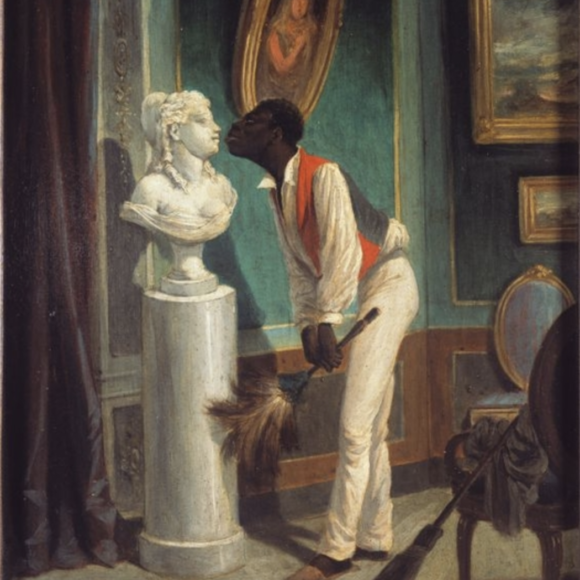Cuban Art: Pre-revolutionary Art Movements
Cuban art closely followed the turbulent history of Cuba. As political and social conditions changed, so did the art and culture of the country. Incredibly versatile and diverse, Cuban art encompasses colonial iconography, European Cubism and Impressionism, Mexican muralism, and African and North American elements. The beginnings of the Cuban rich artistic legacy can be traced back to its colonial-era and modern Prerevolutionary art movements.

Colonial Influences
During the colonial era, the first Cuban artists mimicked the styles popular in Europe of the time. Depictions of religious characters and stories are typical of the period. One of the first known artists Jose Nicolas de la Escalera is known for painting black Cuban slaves alongside intricate religious scenes. Other artists, like Vincente Escobar, painted portraits rooted in the European Classical style traditions.
Check our upcoming events selected for you:
The genre of costumbrismo, inspired by the Haitian revolution and independence achieved in 1804. emphasised the simplicity of Cuban everyday life. Spanish born artist Victor Patricio de Landaluze was the most notable figure of the movement painting idealised visions of plantation life. During the very last days of the Spanish colonial rule, landscape imagery took the central stage with artists painting the astonishing Cuban landscapes in traditional European style with a touch of Impressionism.

Vanguardia Art Movement
Following the independence from the Spanish colonial rule, a new style called Vanguardia took Cuba by storm. Vanguardia artists rebelled against conventional art, supported by Cuba’s national art academy in Havana. Having lived in Paris for most of their formative years, the artists were influenced by the French movements including Surrealism, Cubism, and modernist Primitivism. Their work had a strong political message, as they rebelled against the dictatorship of Gerardo Machado and American neo-colonial control.
Paintings by pioneering Vanguardia artists aimed to rediscover the national identity of the Cuban nation. They painted villages and everyday life in stark contrast to elitist Cuba. In their search of a unique Cuban style, painters like Antonio Gattorno and Eduardo Abela incorporated art from neighbouring Mexico into their rural, sensual and exotic but also melancholic portraits of Cuban people. Inspired by the works of Paul Cezanne, painter and sculptor Victor Manuel is known for employing primitivistic simplicity in his portraits of women. One of his most famous paintings La Gitana Tropical, a pivotal work of the Cuban Avant-garde, is often considered the Cuban counterpart to the famous Mona Lisa. Artists Carlos EnrÃquez and Fidelio Ponce took a different approach and placed the themes of death in the centre of their interest. By observing their paintings, a viewer can notice two distinctively different approaches to death, an exuberant emotional approach of EnrÃquez vs. the contemplative, darker approach by Ponce.
The only female member of Vanguardia, Amelia Peláez created a vivid colourful body of work under the influence of Henri Matisse and Cubism. Her chromatically rich, complex compositions juxtaposed Cuba’s flora with the colonial architecture in Havana. Even today, Amelia Peláez is considered one of the most celebrated Cuban artists alongside Wilfredo Lam. Having lived abroad for two decades, Lam was hugely influenced by Impressionism and Cubism, styles which he skilfully combined with African and Caribbean iconography. His mature cross-cultural style of painting included influences from his Asian and African background as well as the popular art movements of the time. Shortly after his return to Cuba, moved by the energy of his homeland, Lam created a series of paintings examining the effects of colonialism on the land. His fascination with the Santeria religion resulted in a series of works that depict Santeria rituals that combine African and Catholic symbols and beliefs.

Naive Art
Unlike the dark and complex cubism and impressionism-inspired Vanguardia movement, Naive art was marked with a more fun, bright colour palette and a positive atmosphere emphasising the beauty of life despite the hardships. The rise of the Cuban Naive art movement coincides with the touristic boom, as more and more paintings were produced to satisfy the needs of tourists. Due to its commercialisation, for a long time, Naive art was considered a lesser form of art.
Eventually, in the late 20 century, Naive art got broad recognition, exhibitions were organised all over the world, and the best-of-the-best got their rightful place in art history. Julian Espinoza Rebolledo, a construction builder and a self-taught artist is certainly among the selected few. Inspired by the Santeria religion, his paintings are packed with religious scenarios, vibrant colours and have an almost hallucinogenic effect. The popularity of Naive art has expanded after the revolution and is growing in popularity ever since. Today, many Cuban artists including those of academic background, are turning to the Naive art style.
Embark on a Journey Through the Exciting History of Cuban Art
By incorporating styles from diverse cultures and traditions, Cuban art movements produced some of the most groundbreaking works in the history of art. Learning more about Cuban art is a perfect way to get to know the spirit of the Latin American country and its complicated history. Sign up for our series of lectures about the history of Cuban art, beginning from the Spanish colonial influences to the early 21st century movements. The first art talk starting September 2nd, 2021 will guide you through the singularities of Cuba’s modern prerevolutionary works, which paved the way for the contemporary artists that followed.

Leave a Reply